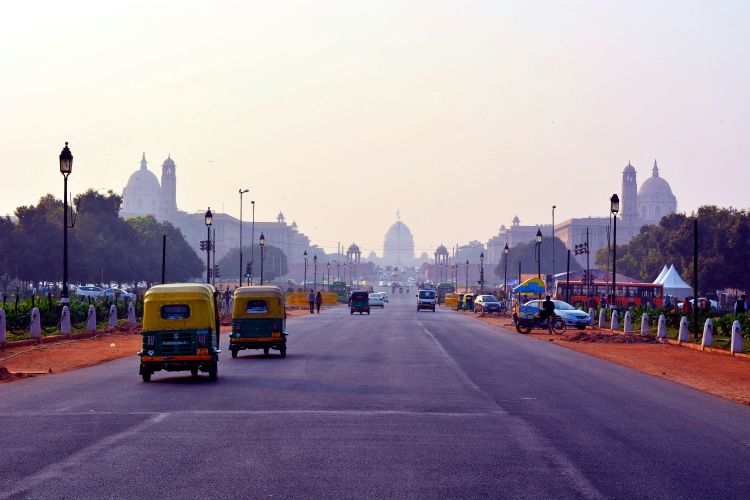India’s economic growth: After years of effort to curb inflation, it seems retail inflation is poised to fall within the Reserve Bank of India’s (RBI) target range, according to its March State of the Economy report. This progress, however, is threatened by extreme weather events and a recent surge in international crude oil prices due to geopolitical uncertainties, noted in the report, co-authored by RBI Deputy Governor Michael Patra. The RBI forecasts headline inflation for the fiscal year 2024-25 at 4.5%. Notably, the repo rate has remained unchanged since April 2023.
In March, the Consumer Price Index (CPI) inflation hovered around 4.9%, following an average of 5.1% in the prior two months—a significant drop from December 2023’s peak of 5.7%. Despite this, food inflation remains high and poses a risk to the disinflation trajectory. Summer often brings overlapping food price shocks, necessitating vigilant monitoring. Fortunately, unlike last year’s subpar monsoons, this year’s forecast of an above-normal Southwest monsoon could help ease food price pressures. However, a World Meteorological Organisation report warns of an alarming rise in extreme weather events globally.
READ | PMSBY extension: Low claim numbers prompts decision
Additionally, Brent crude prices remain a concern; they reached $90 per barrel in early April due to escalating tensions in West Asia, although they have since decreased slightly.
Global economic challenges also loom large over India’s growth aspirations. The ongoing trade tensions between major economies, coupled with the unpredictable nature of global markets, necessitate a resilient domestic economy capable of withstanding external shocks. Strategic diversification of India’s export markets and boosting internal demand are imperative to safeguard against global economic downturns.
Fuelling India’s Economic Growth
India stands as the fastest-growing major economy globally, needing to expand by 8-10% annually over the next three decades to benefit from its demographic dividends. With a working-age population surpassing the elderly, this golden period is projected to last until 2055, heralding significant economic opportunities. As India remains a lower-middle-income country, its strategy for the coming decades should aim to maximise the contributions of its youthful and burgeoning workforce to the growth of gross value added.
Improving employability, particularly through the formalisation of job opportunities for youth and women, is crucial. Although the increase in labour quality has been modest (about 0.7% annually from 1980 to 2021), there has been notable improvement since 2017-18, led by the service sector. The manufacturing sector has also seen continual growth in labour quality after a brief slowdown in 2019-20.
India’s economic ascent cannot be realised without a robust private sector. Following a slowdown, there is a resurgence in private investment, buoyed by renewed confidence among Indian companies, as reported by the Asian Development Bank (ADB). The RBI’s report highlights that Indian firms are reducing their debt and are in a stronger financial position.
Embracing technological advancements and fostering innovation are pivotal for India’s economic trajectory. The digital revolution presents an unprecedented opportunity for economic expansion through new industries and enhanced productivity in existing sectors. Government and private sector initiatives aimed at boosting digital infrastructure and skills training are crucial to capitalise on these opportunities.
Moreover, steady domestic demand for goods and services indicates a robust consumer base. With credit rating agencies upgrading more Indian companies than downgrading, the mood around corporate financial health is positive, leading to increased private investment. Furthermore, the government’s heightened spending on infrastructure projects is bolstering the economy.
A decade ago, India ranked as the world’s 10th largest economy; today, it is the fifth largest, trailing only the US, China, Japan, and Germany, and aims to become the third by 2028. To achieve this, India’s current GDP of about $3.5 trillion must grow by at least 6% annually.
However, beyond the headlines, policymakers and the government must focus on improving the general standard of living and ensuring equitable growth. The per capita GDP, just over $2,500, is significantly lower than China’s $13,000. Despite India’s impressive GDP growth, more attention needs to be paid to inclusive growth. The true golden period for India will only arrive when per capita GDP reaches $10,000 in today’s prices, a figure still below the threshold of $13,845 that defines developed nations.
In conclusion, enhancing the standard of living for ordinary Indians is crucial, particularly as evidence suggests that headline poverty rates have decreased under successive governments. Setting and achieving per capita GDP targets, both short-term and long-term, are essential for tracking progress towards these goals.

